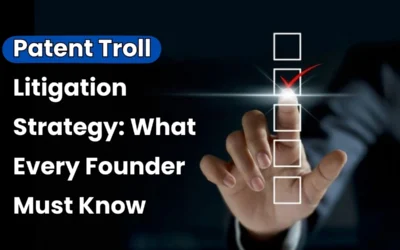
In today’s technology-driven economy, protecting a patent from misuse is crucial—not only for earning monetary benefits but also for maintaining a strong market position and gaining competitive patent monetization advantages. While the financial rewards of a patent are unmatched, the real power lies in the competitive advantage it provides. A well-protected patent allows businesses to enjoy multiple benefits at once, from safeguarding innovation to staying ahead of rivals.
Patent Monetization Advantages
There are multiple benefits to maintaining a competitive advantage, and each provides strong reasons to pursue patent monetization.
First-mover advantage
This is something most businesses look for, as it allows them to enjoy a form of monopoly in the market. It is also one of the biggest reasons why companies invest heavily in research and development—pushing boundaries and trying things that have never been done before.
Boosting R&D and Building an Innovation Culture
Patent monetization isn’t only about making money—it’s also a way to keep innovation moving forward. The revenue from patent deals often goes straight back into research and development (R&D). Companies that actively monetize their patents use this funding to expand labs, upgrade technology, and bring in top talent. This reinvestment helps them stay ahead of competitors and build a culture where new ideas and breakthroughs can thrive.
Limiting Competition with Strong Patents
A strong patent portfolio and maintaining the competition creates a powerful barrier to entry, making it far more difficult for competitors to copy or compete with your technology. Patents provide exclusive rights that can legally block rivals from using the same innovations for up to 20 years in most jurisdictions. In industries like pharmaceuticals and semiconductors, strong patent portfolios are often the reason why smaller firms or startups struggle to challenge established players.
Increase Company Valuation
When businesses monetize their patents, the rewards extend far beyond direct revenue. They gain a competitive advantage that strengthens their overall market position. Exclusive rights to an innovation allow them to block rivals from copying the technology, ensuring stronger control over market share. And they are working on licensing and commercializing the patents.
Real Examples of Competitive Advantage Through Patents
Companies across industries have used patents to secure a strong competitive edge. Apple protects its smartphone innovations to maintain a premium brand and block rivals, while Pfizer leveraged patents on blockbuster drugs like Lipitor to enjoy years of market exclusivity. Even Tesla, despite opening some patents, still holds key innovations in batteries and self-driving that give it a first-mover advantage. These examples show how patents can translate into market control, higher valuation, and long-term leadership.
Future Trends in Patent Monetization
In the coming years, patent monetization will continue to change as new technologies and business practices take shape. AI-powered platforms are making it easier to evaluate patents with greater accuracy, giving companies a clearer picture of their innovation’s value. Blockchain systems are also being adopted to record ownership and manage licensing in a safer, more transparent way.
Read Also: Understanding the key challenges and solutions of patent monetization
Conclusion
In 2025, patent monetization has become more than just a way to generate revenue. It serves as a strategic tool that strengthens competitive advantage, boosts company valuation, attracts investors, and shapes industry standards. Businesses that treat patents as core assets rather than just legal protections will be the ones driving innovation, building market dominance, and leading the future economy.









